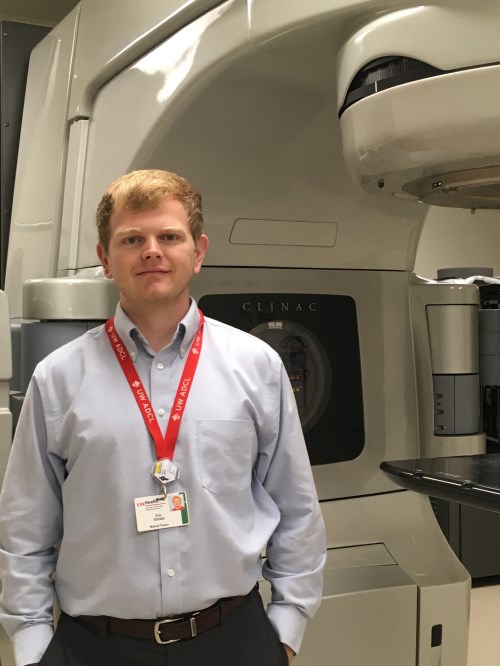Medical Physics Seminar – Monday, October 15, 2018
Molecular Imaging for Personalized Cancer Immunotherapy

Emily Ehlerding (student of Dr. Weibo Cai)
Research Assistant, Department of Medical Physics, UW-School of Medicine & Public Health, Madison, WI - USA
Within the last few years, checkpoint immunotherapy treatments have been greatly improving outcomes for cancer patients. However, only a subpopulation of patients responds to these groundbreaking therapies. Molecular imaging techniques, especially direct imaging of the checkpoint molecules themselves, hold potential for stratifying patients, predicting responders, and monitoring response. Therefore, PET imaging of three major checkpoint molecules (PD-1, PD-L1, and CTLA-4) in murine models using clinically-available antibodies will be presented. We show that expression of PD-1 on human T-cells can be imaged in humanized mouse models using 89Zr-Df-pembrolizumab, changes in tumor cell expression of PD-L1 can be visualized with 89Zr-Df-atezolizumab, and that CTLA-4 expressed by T-cells can also be noninvasively visualized with 64Cu-NOTA-ipilimumab, thus providing strong evidence for the use of molecular imaging for personalized cancer immunotherapy.
Characterization of Signal Changes in Light Guides used for Scintillation Dosimetry in the Presence of a Magnetic Field

Eric Simiele (student of Dr. Larry DeWerd)
Research Assistant, Department of Medical Physics, UW-School of Medicine & Public Health, Madison, WI - USA
In recent years, there has been a growing interest in per-forming magnetic resonance (MR) imaging during radiotherapy treatments to allow for real-time motion and target tracking. Integrating MR imaging with radiotherapy treatment presents challenges for dosimetry due to the skewing of the secondary electron trajectories, and consequently the dose distribution, from the Lorentz force. Solid-state dosimeters have been shown to be a favorable alternative to ionization chambers for measurements in magnetic field environments since the density of the sensitive detector volume is similar to that of the surrounding medium. Organic plastic scintillation detectors (PSD) are becoming a popular solid-state detector for dosimetry measurements in megavoltage (MV) photon beams due to their near-water equivalence in the MV energy range, small detector volume, small energy dependence, and real-time readout. Although PSDs possess many attractive dosimetric properties, they suffer from an unwanted noise signal that degrades the overall detector signal-to-noise ratio (SNR). This noise or stem-effect signal is caused by Cerenkov radiation and fluorescence generated in the light guide of these detectors. This work explores the properties of the stem-effect signal in various types of light guides used in PSDs in linac-based measurement geometries. In collaboration with the German primary standards laboratory (PTB), the stem-effect signal was characterized as a function of measurement geometry and magnetic field strength in these various light guides. In addition, Monte Car-lo models of the optical properties of these light guides were constructed to understand the observed changes in response.